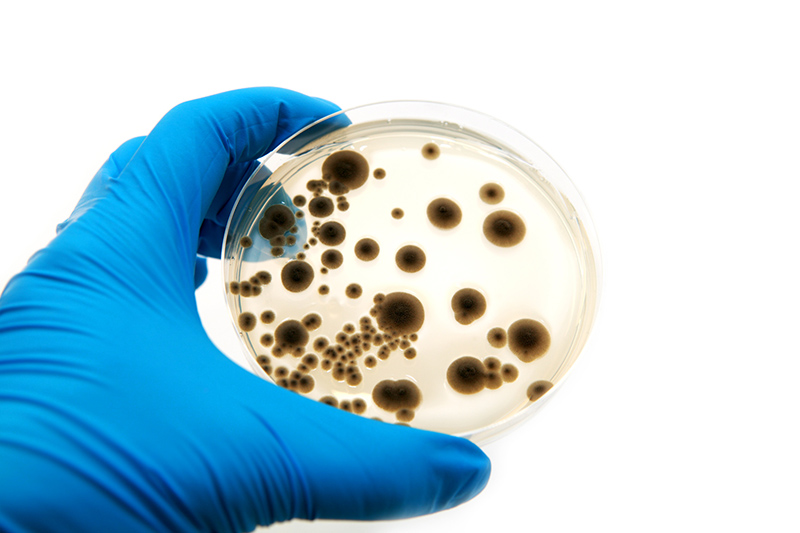It is not uncommon that wood structures deterioration in buildings is attributed to rot following water damages or watering caused by a partial fire. This attribution is usually false because moulds are not the real cause of deep rot in wood.
Moulds are “microcospic” mushrooms, in other words, mushrooms difficult to see with naked eyes. In the presence of favourable humidity and temperature conditions, they grow on the surface of materials and rapidly produce spores. These germs are used for their reproduction and can cause allergic reactions to sensitive persons. When they produce spores (or sporulate), we can see tiny moss of different colours on the materials. Depending on their genus and species, moulds usually grow and die rapidly, but they do not deeply affect the wood.
On the opposite side, mushrooms said to be “macroscopic”, can deeply deteriorate wood. These mushrooms have an easily observable development when they build their wide reproductive structures. However, when they grow in materials, they can stay hidden for months, even years. Edible mushrooms are examples of these, as well as dry rot the “house enemy,” which has already been a topic in one of our bulletins.
It would take lots of months, in the best of conditions, even years, for macroscopic mushrooms to develop, with the help of other microorganisms, and to deteriorate wood structures to the point of their loss of integrity. This is why, if we observe rotten wood structures or that moulds are present a few days or weeks following a loss involving water, these have nothing to do with the deep deterioration observed. They only took advantage of the new opportunity given by the loss.
It is thus important to consult an expert in microbiology, who will be able to distinguish the limits of the losses due to these kinds of cases, compared to the long-term deterioration of the building. For the expert, the deterioration profile will also indicate the possible causes of this deterioration.

